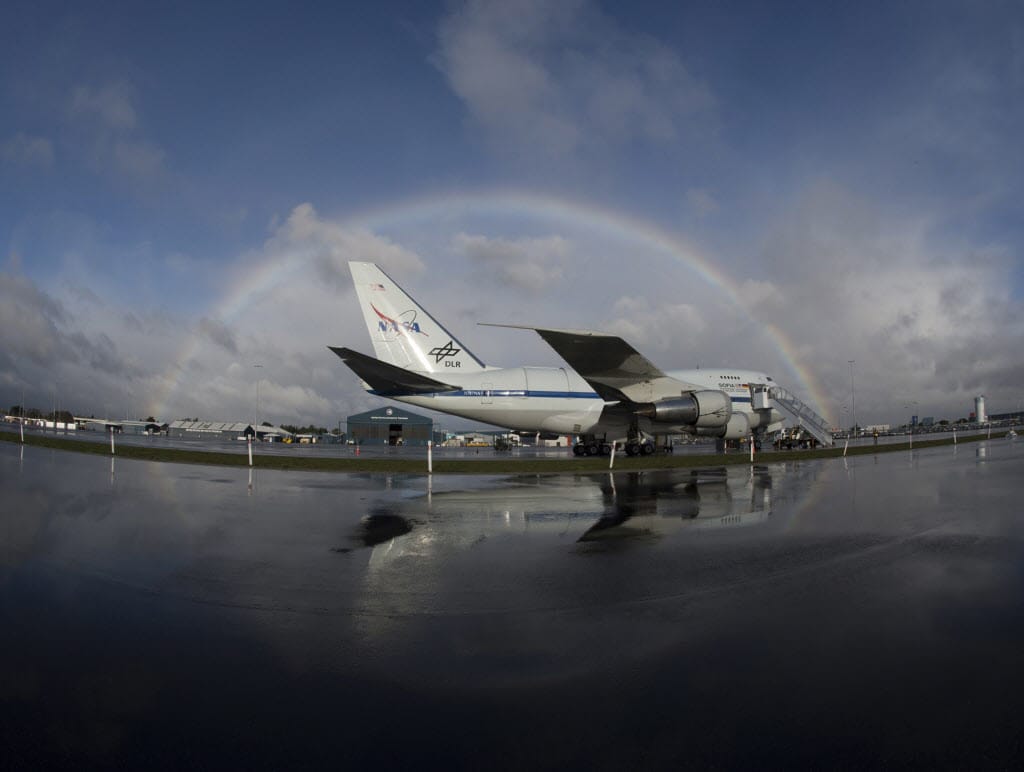While the rest of us are stuck at work next week, two Hockinson teachers will soar to the stratosphere to look at space from the world’s largest airborne observatory.
Just before 7 p.m. on Wednesday and Thursday, Kim Abegglen, 42, and Anna-Melissa Lyons, 43, will board a 747SP in Palmdale, Calif., and fly all night long with a group of NASA astronomers. The pair will spend 10 hours each night peering out at Jupiter, black holes, nebulas and other celestial objects from a 2.5-meter-long infrared telescope mounted in the plane.
“To be able to rub elbows with astronomers, I think, is going to be pretty cool,” Abegglen said. “To be able to watch them do what they do is pretty exciting.”
The plane typically flies at an altitude of 35,000 to 45,000 feet. At that height, water vapor disperses enough for the telescope to pick up infrared light waves, which aren’t visible from Earth’s surface.
The flight plans show the plane flying north into parts of Canada and reaching a peak altitude of 43,000 feet before returning to Palmdale at 5 a.m. Abegglen and Lyons fly to California on Monday, and they will have just two nights to adjust to their new sleep schedules.
The trip will be quite out of the ordinary for the teachers, who spend their days in a classroom at Hockinson Middle School. Abegglen teaches seventh- and eighth-grade math and science, and Lyons teaches sixth- and seventh-grade math. Until January, neither had even taken an astronomy class.
That month, the two began a 12-week, graduate-level astronomy class once NASA selected them to fly aboard the plane as part of its Stratospheric Observatory for Infrared Astronomy program. The program takes teachers up above the clouds to observe and work with scientists through each stage of their research.
Many applied, and only 24 teachers throughout the nation were picked for the competitive program this year. Abegglen and Lyons are the only two from Washington, and a pair from Medford, Ore., will join them aboard the plane.
Each teacher was required to complete the class before the trip, spending their spare time on studying and completing extensive reading assignments. And when they come home, they will bring their experience back into the classroom, Abegglen said.
“Being part of SOFIA for me is another opportunity to connect kids to scientific inquiry — what do scientists do, how do they go about doing it — and for them to realize that what we do in class is exactly what these folks are doing,” she said.
The teachers said they’ll stay in touch with their students from aboard the plane using Twitter and Instagram. After they return, they plan to host a community outreach program with a series of family nights for students and their parents to learn about infrared astronomy, Abegglen said.
Lyons said the trip will help them show their students that learning can be fun and exciting. It’ll also give them an example of how academia can be applied to real world experiences.
“The thing that we hear a lot is: When am I ever going to use this, Mrs. Lyons? Why do I need to know this?” she said.
Lyons never expected to have a chance to fly with NASA. Abegglen roped her into applying for the trip when she found out about SOFIA several years after completing a NASA Endeavor fellowship. And Lyons hopes her students will take away an important lesson from that unexpected turn in her life.
“Don’t close those doors,” she said. “Don’t say, ‘I’m not good at it and I’m never going to do that.’?”




